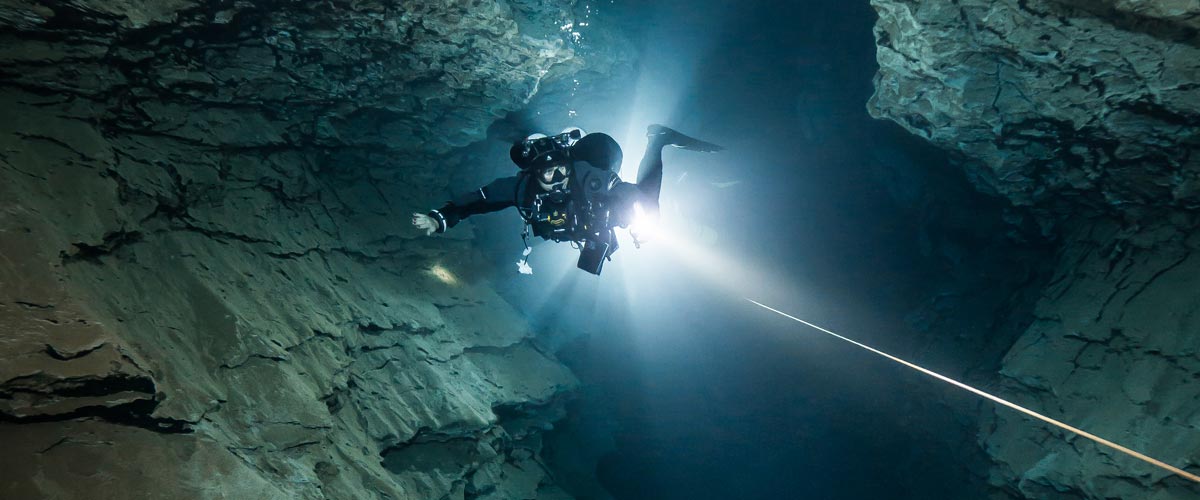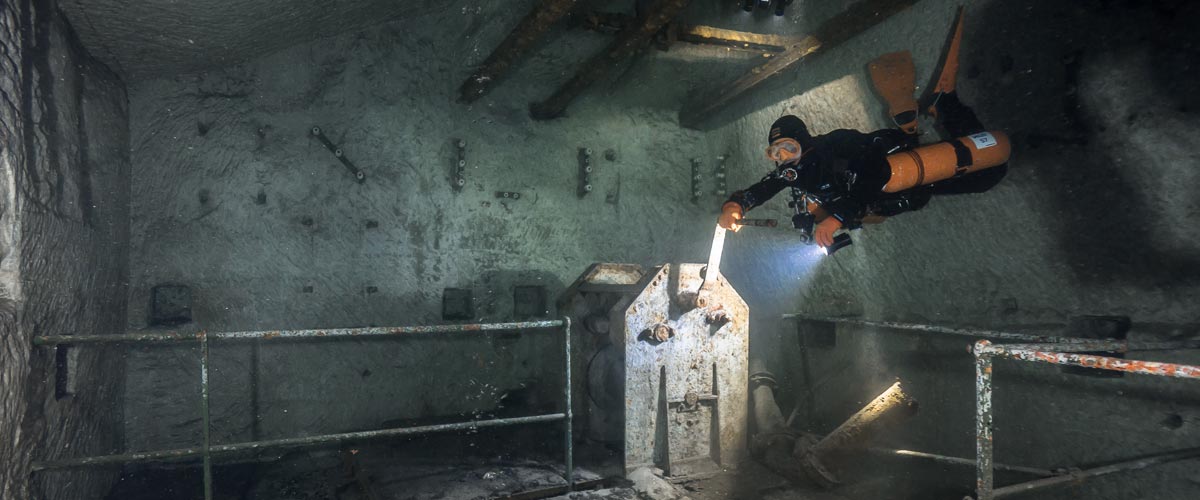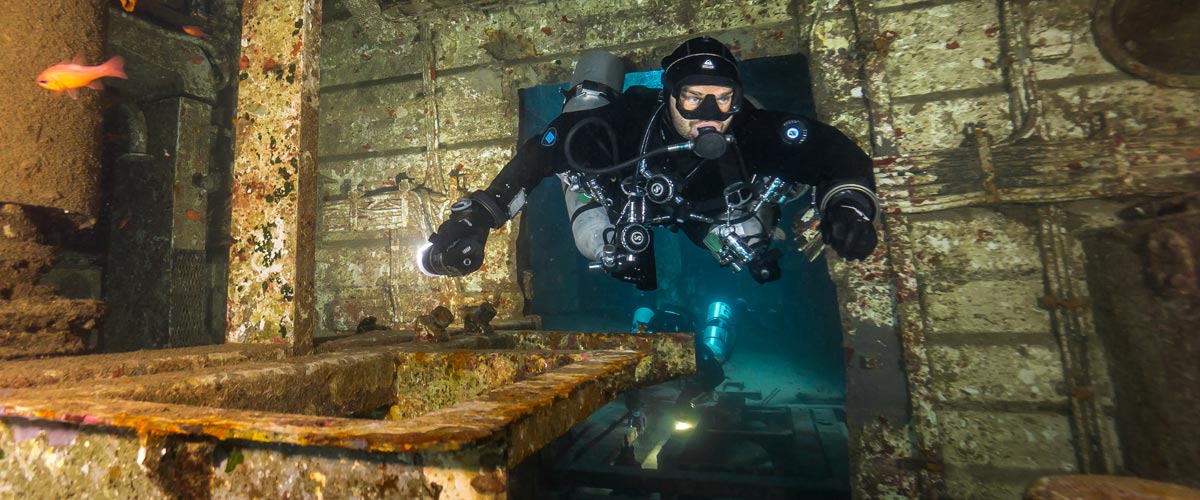Dive Training Blogs
Rescue in Different Gear Configurations
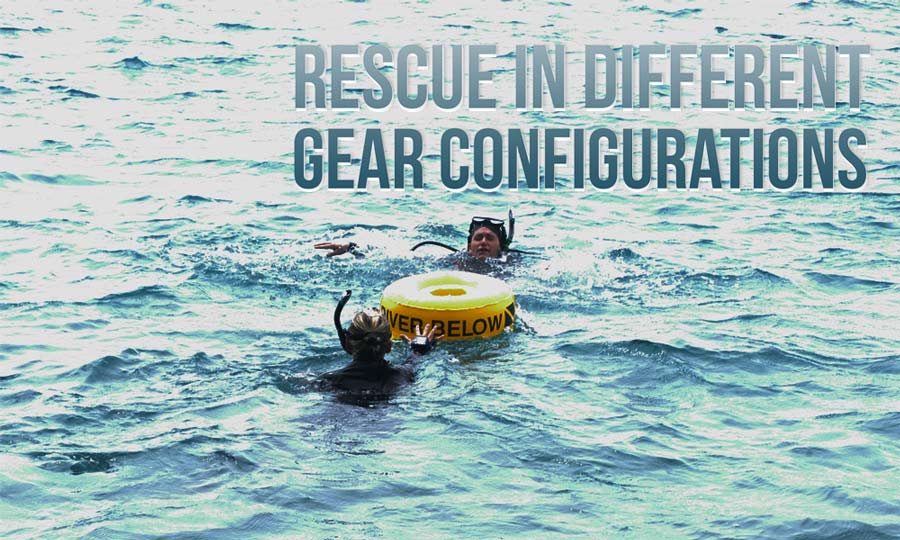
by Lauren Kieren
“Most people seem to think of the brain as an incredibly complex machine that can do amazing things, but, at least when it comes to processing visual information, your brain is actually quite lazy, filling in what you are seeing with generic information it figures is probably there.” – Matt Moore
Don’t take offense; I am not using this quote to call you lazy… just your brain. In all fairness my brain is lazy as well and proved this when I needed it most during an emergency.
One afternoon I was out on a boat getting ready to teach a Wreck Diver course. We were moored on a shallow site consisting of three wrecks about 50 yards from each other in a triangle formation. This allowed divers to easily visit three wrecks on a single dive and check out some coral and rubble between them.
Before I entered the water, a separate group of certified divers surface-swam out to the farthest wreck to make their descent. Meanwhile, I was on the boat reviewing some of the skills I was about to do on the dive with my student. Moments after the group of divers descended we heard splashing and screaming, “Help! Help!” The captain yelled to the diver, “Inflate your BC!” and the diver continued to splash, scream, and never inflated their BC.
Immediately, I grabbed a life ring and donned my mask and fins before entering the water to swim out to the diver. Upon reaching the diver, I went to inflate his BC.
There was no corrugated inflator hose, no inflator, and I found myself in shock. How can this be? Did it fall off? Where is his inflator? I handed the diver the life ring and he composed himself, holding on to the floatation device for dear life, as I floated there dumbfounded.
Before we get into the rest of this story, I would like to ask if we could take a step back and watch a short video. I promise, it ties into the story and is important to understand how I ended up puzzled moments after this rescue.
Do I still have your attention? Good!
Think back to me floating there dumbfounded, as the panicked diver held on to the life ring. What happened? Why couldn’t I inflate his BC? Why couldn’t he inflate his BC? Where were his buddies?
As it turned out, the diver recently bought a new BC that had a feature I knew about but I was not familiar with using. This BC system did not have a corrugated inflator hose over the shoulder but rather a one-touch control lever on the diver’s side to inflate and deflate the BC’s air cell. As for his buddies, they did not even consider he was missing and assumed he simply went a different direction until they surfaced after their dive.
Remember from the video, “Knowledge does not always equal understanding.”
In the heat of the moment, as the diver was moments away from sinking, the last thing he considered while he was splashing at the surface trying to stay afloat was pushing the lever on his side or orally inflating his BC with the small inflation tube tucked in his sleeve on the shoulder. In all fairness, this was the last thing my mind considered when I came to his rescue.
Let’s think about this for a moment; a slightly different BC completely destroyed our brain’s problem-solving ability in the midst of an emergency. The diver knew the change in his equipment, but when task loaded and stressed, his brain could not make the connection and understand what to do next. I had seen this type of BC before, but when task loaded, I did not consider the lever on his side either.
As for the buddies, they knew their buddy was not with them, but it never even occurred to them that he was having a real emergency. It was a shallow dive that everyone had done many times before, so they thought, “What could possibly go wrong?”
Is it possible to adjust our brain to correct this in the future? Of course, but just like riding a backwards bicycle, it takes constant and deliberate practice.
There was only one change in the gear configuration mentioned above. Consider the vast differences in common equipment you see at dive sites today… single tank back mount, sidemount, back-mounted doubles, rebreathers, and more.
If you were not intimately familiar with one or all of these configurations would you feel comfortable assisting a diver wearing them? Sure, a lot of us probably think we could, but in many situations our brains take shortcuts that can hide the obvious and most simple solution when we are not expecting it. In these moments, our brains take over and fill in information that it assumes is accurate or present.
Next time you refresh your rescue diver skills, consider adding dissimilar configurations into the mix to hone in on the differences and necessary things to consider before rendering assistance to a diver in need. Also, be very careful about how you interpret things because you are looking at the world with a bias, whether you think you are or not.
To find out more about International Training, visit www.tdisdi.com.
Blogs
Intro to Tech: What is it about?
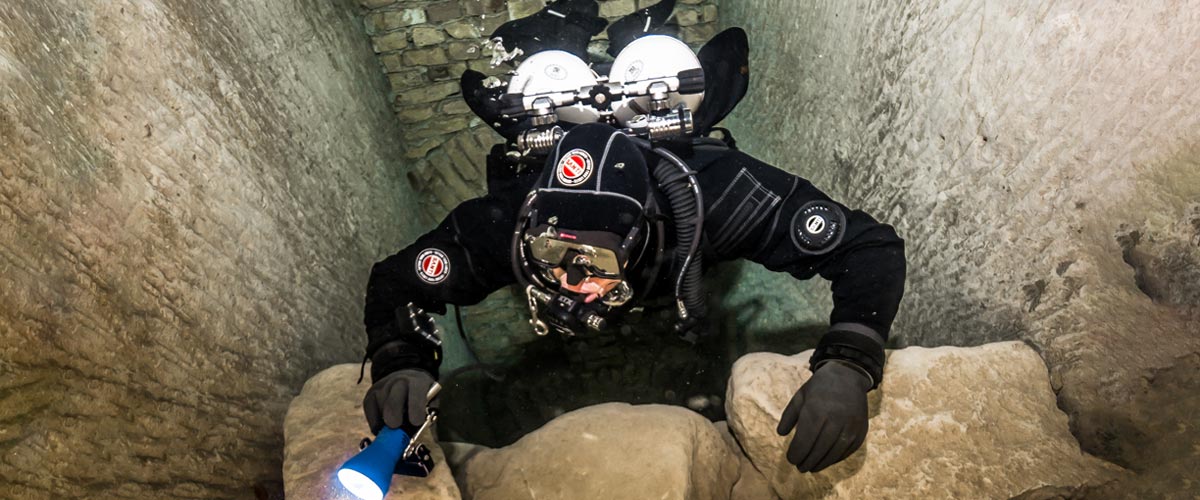
Article by José Pablo Mir
Pictures by Cezary Abramowski
The world of technical diving is exciting. It opens the door to new sites, depths, and bottom times. More importantly, it opens our minds to a new way of planning, facing, and experiencing dives, even those not purely technical.
Becoming a technical diver is a process, and like in other aspects of life, we should find the proper entry point that suits us best based on our knowledge and experience. The Introduction to Technical Diving course from TDI -the world’s largest and most recognized technical diving teaching organization- is the best option for divers who have yet to gain experience in the fundamental aspects of this new practice. The course’s content and its embrace of new techniques and technologies make it possible to acquire a solid foundation to learn and gain experience in this practice properly.
Becoming a technical diver is not something that happens overnight, whether deciding to become one or receiving a certification card stating we are now technical divers. It is a slow process extending farther away than any introductory course. It requires effort and dedication. But it will bring us satisfaction from day one -or two.
It is a matter of mentality
First, we must understand and accept that technical diving, involving greater depths, longer bottom times, exotic gases, virtual or real ceilings, and more, comes with higher levels of risk than the sport diving we have been practicing until now.
Although this discussion usually starts with a warning about risks, as I’ve done in the previous sentence, our practice is not a game of chance.
Technical diving is a rational activity that requires maturity and good judgment, and we will put everything into ensuring that each dive is a successful one -meaning we return from it safe and sound. With this understanding, we will strive to establish a mental attitude more aligned with our practice and its realities.
This new “technical diver” mindset we will develop will lead us to be more cautious in our executions, more analytical in our plans, more rational in our strategies, and more detailed in our procedures.
Experience will keep teaching us to know ourselves better, to keep our anxiety and other emotions under control, and to manage our impulses. Over time, our senses will sharpen, and we will be more attentive to the particulars of the situation we find ourselves in.
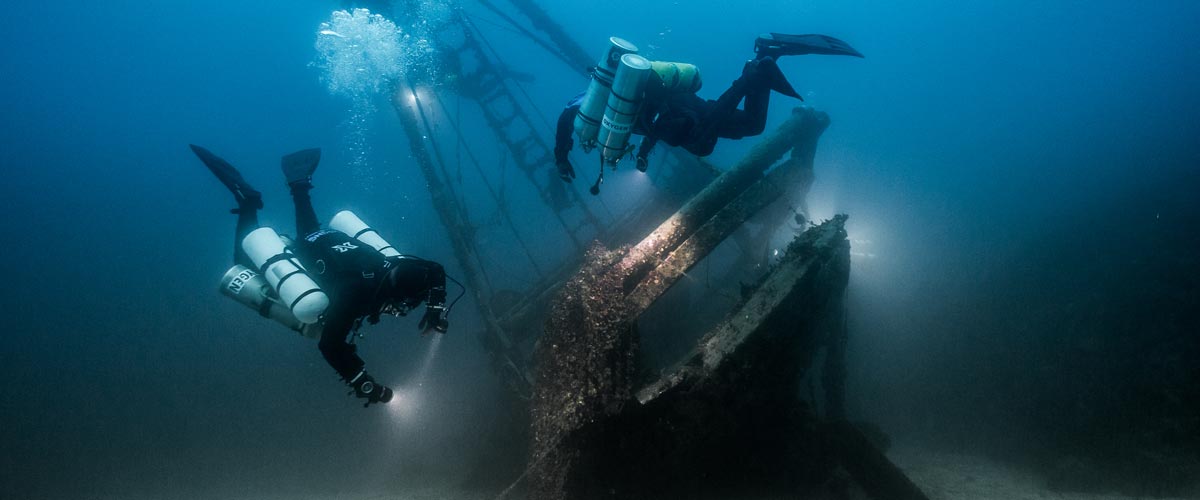
Strategies and procedures
Our strategies, those broad guiding lines tracing the path to follow, from how to approach planning to where, with what, and how we are willing to get there, will be more specific and more practical. Not because they magically become so, but because we will consciously and deliberately frame them that way.
We will establish clear, concise, and realistic procedures. Not only for the undesirable situations that may present themselves but also for those that are part of our dive objectives.
Even though, as technical divers, we often use equipment different from what we were previously accustomed to, it is essential to note that the gear does not make the diver. In a way, we could consider such equipment as the necessary tools to implement what our goal seeks to achieve, according to our strategies and procedures.
Technique plays an important role
We must put our greatest effort into learning and perfecting the different techniques we will be acquiring. Buoyancy, trim, propulsion, cylinder handling, deploying DSMBs and lift bags, valve drills, and more are essential skills we must begin to master to progress in our art. What we cannot do, when we need to do it, can harm us.
Our techniques must be effective and achieve the purpose for which they were devised. But they must also be efficient and require the least resources possible, including the time they take and the effort they demand. Effectiveness and efficiency will prevail over beauty and other considerations that may come to mind, although none of them should be mutually exclusive. A technique executed efficiently and effectively tends to have an inherent beauty.
Refining techniques is a lifelong mission. Some of them will be easy to master from the go; others, on the other hand, will be our life mission and will require many repetitions just to resemble the idea we have in mind of how they should be executed.
We must consider the environment
Our learning, the needs and musts of the practice we engage in, the experience we gradually gain, our strategies and procedures, and even our equipment and tools change with the environment.
Diving in the ocean, everything about us must be suitable for ocean dives. Conditions there rarely emulate those found in a pool, lake, or river. Variable winds and currents, greater depths, visibility conditions, other divers with uncertain skills around us, marine life, maritime traffic, distance from the coast, and many other factors add complexity and uncertainty.
It is never necessary to master the pool on the first day, but planning and aspiring to gradually cope with the ocean’s conditions is essential.
The cost of good training
We are aware that our resources are often scarce in relation to the possibilities of use we could give them if they were not. To a greater or lesser extent, we are part of the economic reality in which we are embedded.
Fortunately, the cost of good technical diver training is not an entry barrier. Comparing training and equipment costs, we see that the former are generally lower. Yes, lower cost for personalized service, essential to our future
performance and safety, than for a series of mass-produced products that are mere, albeit necessary, tools for an end.
The value of good training
The value of the training we received encompasses a range of characteristics, from emotional and methodological to technical and technological. TDI and its Introduction to Technical Diving course offer a deep and modern approach, with a teaching strategy that aims to create thinking divers, not merely obedient ones.
As technical divers, our knowledge is our primary tool. In this type of activity, what we don’t know can harm us.
Is this course optional?
Unfortunately, the fact that this Introduction to Technical Diving course is not a prerequisite for any subsequent training is an invitation to consider it optional. And we all know what usually happens to “optional” under budget constraints.
However, this course should be seen as optional only by those divers who are somehow familiar with the use of technical equipment, who have a mindset more in line with the requirements of this type of diving, who plan and execute the dives the proper “technical” way, who know their gas consumption rate, who are not intimidated by non-decompression tables, who feel comfortable using their dive computers, and know the techniques and have at least an acceptable level of buoyancy, positioning, and propulsion. Those can go straight to a more advanced training course, such as TDI’s Advanced Nitrox.
We must ask ourselves whether or not we are in that group.
Remember our goal: to have fun
Recreational diving is our passion. Jumping into the water carrying heavy equipment and having properly dotted our I’s and crossed our T’s have only one ultimate goal: fun. This is the activity we have chosen as a hobby. We must enjoy it; it must give us pleasure and make us vibrate.
Having a good time is not optional!
Blogs
Four opportunities to go pro in 2024 with Dive Friends Bonaire
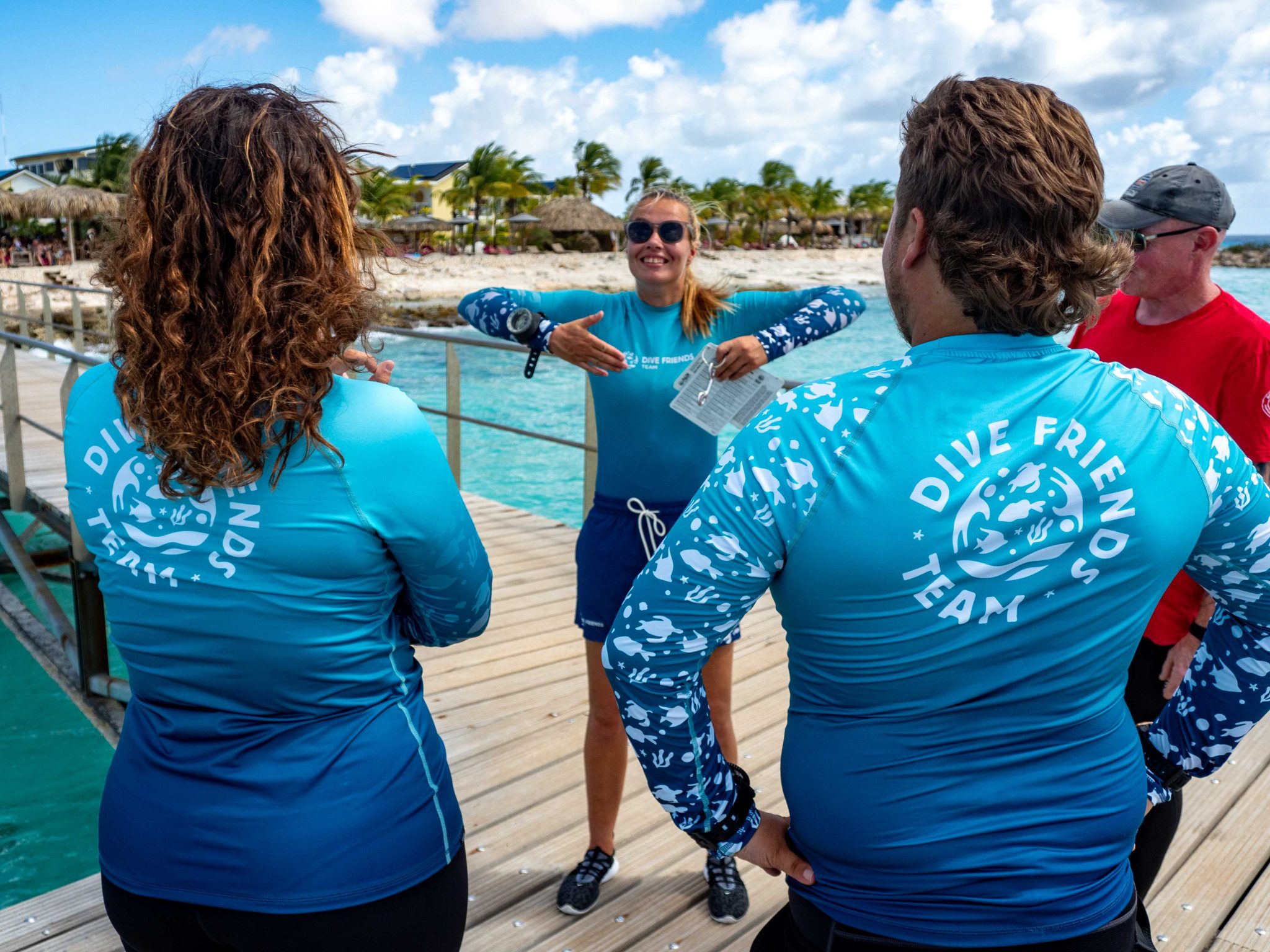
Dive Friends teaches the Instructor Development Course (IDC) several times a year to students who are eager to share their passion for diving with the world.
Dive Friends is known for the personal approach throughout the course. Their in-house course director will lead the students through every essential step, mentoring them to achieve their fullest potential as a dive instructor.
Applications for the following IDC start dates are now open:
- 12 April
- 5 July,
- 20 September
- 29 November
Partnership with Casita Palma
If the student opts for the IDC-Deluxe or IDC-Supreme package, their accommodation will be arranged for them at Casita Palma. This small and quiet resort is within walking distance from Dive Friends Bonaire’s main dive shop location and has everything you need to relax after an intense day of IDC training. Breakfast is included, so the student will always be fuelled and ready for their day.
Contact Dive Friends Bonaire’s Course Director Eddy for more information: coursedirector@divefriendsbonaire.com.
-

 News3 months ago
News3 months agoHone your underwater photography skills with Alphamarine Photography at Red Sea Diving Safari in March
-

 News2 months ago
News2 months agoCapturing Critters in Lembeh Underwater Photography Workshop 2024: Event Roundup
-

 Marine Life & Conservation Blogs2 months ago
Marine Life & Conservation Blogs2 months agoCreature Feature: Swell Sharks
-

 Blogs1 month ago
Blogs1 month agoMurex Resorts: Passport to Paradise!
-

 Gear News3 months ago
Gear News3 months agoBare X-Mission Drysuit: Ideal for Both Technical and Recreational Divers
-

 Blogs2 months ago
Blogs2 months agoDiver Discovering Whale Skeletons Beneath Ice Judged World’s Best Underwater Photograph
-

 Gear Reviews2 months ago
Gear Reviews2 months agoGear Review: Oceanic+ Dive Housing for iPhone
-

 Blogs3 months ago
Blogs3 months agoThe Thrilling Encounter with Tiger Sharks at Beqa Lagoon’s ‘The Colosseum’ with Coral Coast Divers
















